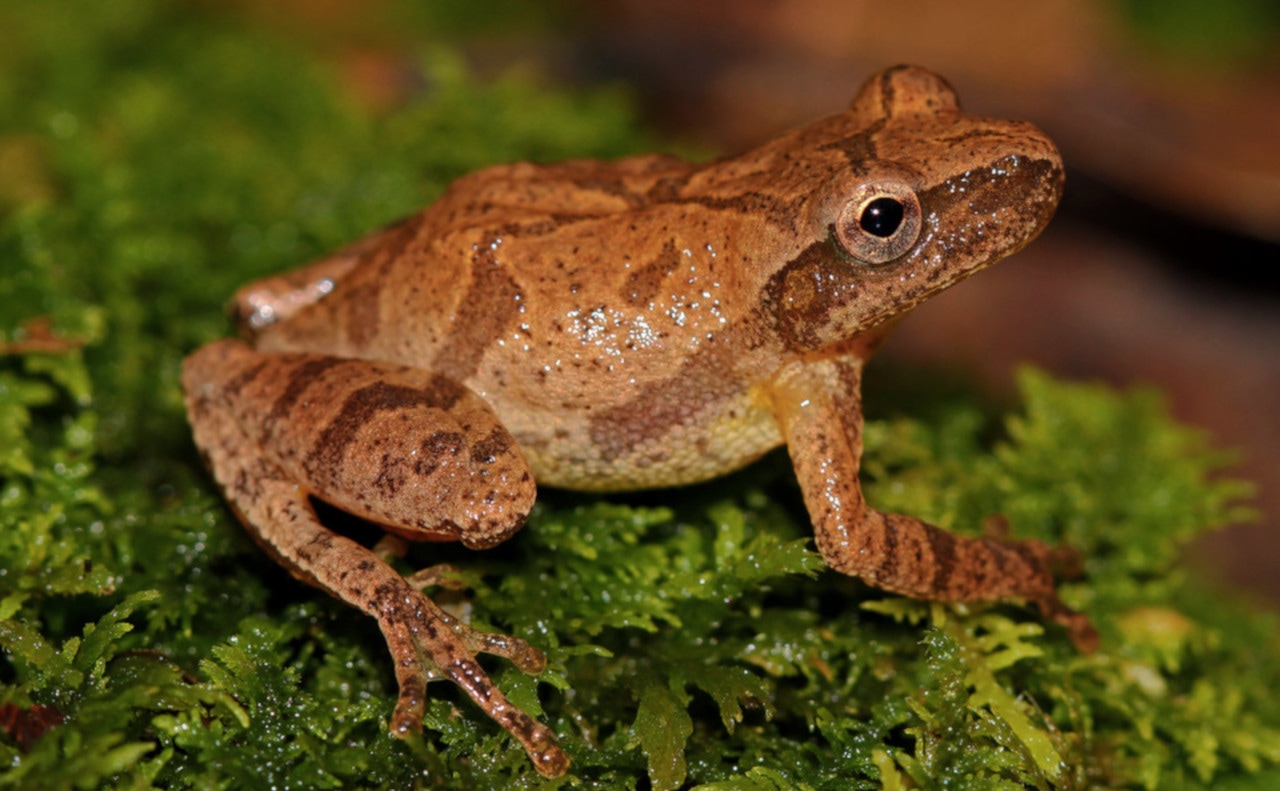Amphibians in the Pond
[[translate(episode,'title')]]
[[translate(episode,'audioCredit') || translate(episode,'credit')]][[translate(episode,'title')]]
[[translate(episode,'audioCredit') || translate(episode,'credit')]]Audio Transcript
You are now beside the Pond. Across from the sign is a backless bench. If you would like, please enjoy this next stop from the bench. If you do, you will be facing the pond. To your left is the swale, and to your right is the continuation of the Eco Trail. Trees are planted all around you. On a sunny day, you can rest here in the shade.
Amphibians in the Pond: A pond is a small body of water that supports wildlife such as fish, reptiles, insects, birds, and mammals. Ponds are excellent habitats for amphibians. Amphibians include frogs, toads, and salamanders. Many adult frogs and salamanders forage for insects and other small arthropods. An arthropod is an animal with no backbone or skeleton. The pond provides the right environment for amphibians to lay their eggs and for tadpoles to grow and mature to adulthood. Several frogs that occupy this habitat include the spring peeper (include sound) and American bullfrog (include sound).
The spring peeper is a brownish red color with light brown stripes that cover its body. While its legs and toes have horizontal stripes, its body has stripes in different directions. It has smooth skin. It grows only about an inch long. The American Bullfrog is an olive green color with some tones of grayish brown. It grows up to six inches. Its belly can be yellow or white and have black spots. It has eyes that pop upward, with brown irises and almond-shaped pupils. Its skin is bumpy.
Reach out and touch the shape and texture of the frogs pictured on the right half of the sign. The top image is of the tan, striped spring peeper frog sitting on a green patch of wet moss. The image of an American bullfrog, positioned below, captures the dark green amphibian at the water’s edge. As you touch, pay attention to the different textures of their skin. Feel the circular, bumpy pattern of the bullfrog and compare it to the smooth skin of the spring peeper.
To continue on the tour, turn to your right to go up the small hill. Head 280 feet to the next intersection. The next sign is located to your left on the corner of the path. Listen to the sounds of the pond as you continue to our next stop.
Spring Peeper photo by Peter Paplanus
